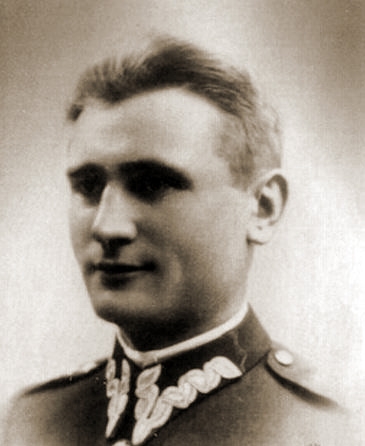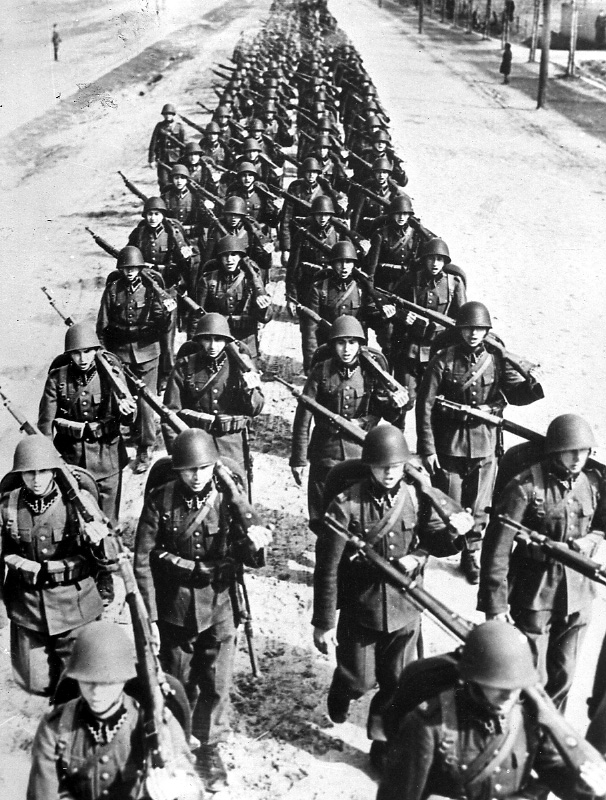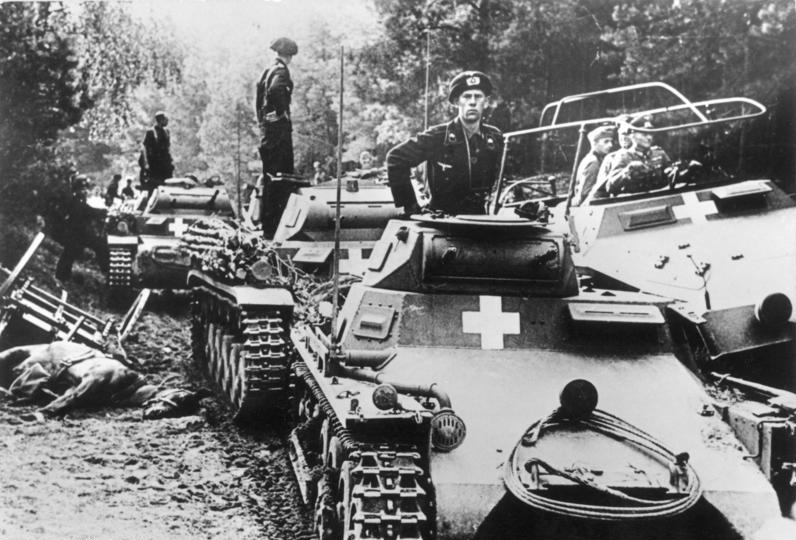Between September 7 and September 8 was fought the “Battle of Wizna. It is often known as “the Polish Thermopylae” – a reference to the 300 Spartans who bravely held off an enormous Persian army in Ancient Greece.
Polish historian Leszek Moczulski claims that between 350 and 720 managed to defend a fortified line from around 40,000 German troops. For three days they defended the fortified line and they managed to postpone the encirclement of Independent Operational Group Narew that was fighting nearby.
Captain Wladyslaw Raginis was the hero of the battle and the commanding officer of the Polish troops. He swore that he would hold position and fight Germans as long as he was alive. Fighting for 3 days without rest or sleep they started losing the battle. In the end, Captain Raginis said to his troops to surrender and he committed suicide by throwing himself on a grenade.

On September 7, 1939, the German troops entered and captured the village of Wizna. The Polish troops after a short fight had to abandon the village and retreated to the southern bank of Narew. Polish engineers managed to blow up the bridge and because of that, the Germans faced difficulties to cross the river. In the night patrols of German soldiers managed to cross the river but were repelled with great casualties.
In Polish culture, the Battle of Wizna is known as the Polish Thermopylae because of the small number of Polish soldiers who fought against a great number of German soldiers. Here are the statistics:
Polish forces:
720 men (20 officers)
Six 76 mm guns
42 MGs – machine guns
2 URs – antitank rifles
German forces:
42,200 men
350 tanks
657 mortars, guns and grenade launchers
Aircraft support

The area of the village of Wizna was fortified to shield the Polish positions in the south and guard the crossing of the Narew and Biebrza rivers. Out of the 60 bunkers that were planned for the war, only sixteen could be built in time.
Raginis was not only outmanned 60:1 but also had to deal with an extremely formidable foe: General Heinz Guderian. Guderian was one of Germany’s best commanders, known for his infiltration tactics, where strong points on a heavily defended front would be bypassed with special combat teams.

The Poles were vastly outnumbered. German planes dropped leaflets ordering them to surrender, in an attempt to unnerve them and avoid combat. They stated that most of Poland was already under their control, and that “further resistance would only prove futile.” Just when all hope was lost, Raginis found the means to bolster the courage of his men. He swore that he would never leave his post alive, no matter the consequences. Inspired and ready to accept their fate, the soldiers were now prepared to leap into the jaws of death.
The Germans proposed a truce and attempted to force the Poles to surrender, including through threats to shoot their captured comrades if they did not end their resistance. Eventually Captain Raginis, badly wounded but still in command of what was left of his forces, ordered his men to lay down their arms and surrender. However, true to his oath, he refused to surrender. After his men left the final bunker he committed suicide by throwing himself onto a grenade.
Several dozen Polish soldiers were taken into captivity. The rest fell in battle. Many civilians were murdered in Wizna, and Poland would suffer terribly under Nazi occupation. Polish soldiers fulfilled their oath until the very end. The heroic struggle against overwhelming odds is nowadays one of the symbols of the Polish Defensive War of 1939 and is a part of Polish popular culture.
Although the Polish units were almost entirely composed of conscripts mobilised in August 1939 rather than professional soldiers, their morale was very high. After the war, Guderian had trouble explaining why his Corps was stopped by such a small force. In his memoirs, he attributes the delay to his officers “having trouble building bridges across the rivers”. During the Nuremberg Trials, he remarked that Wizna was “well-defended by a local officer school.”
While even though nearly all the men in this famous last stand were killed in battle, the message it sent was one of great valor and bravery. These brave men kicked off one of the bloodiest segments in human history with an act of selflessness. They showed that there is value in setting an example, in creating a legend: in slowing the advancement of evil, even if it comes at the cost of your own life.
